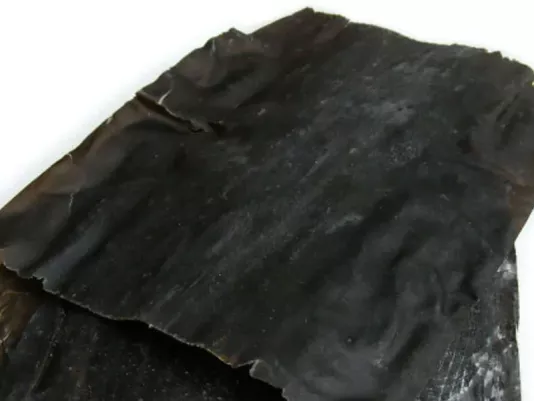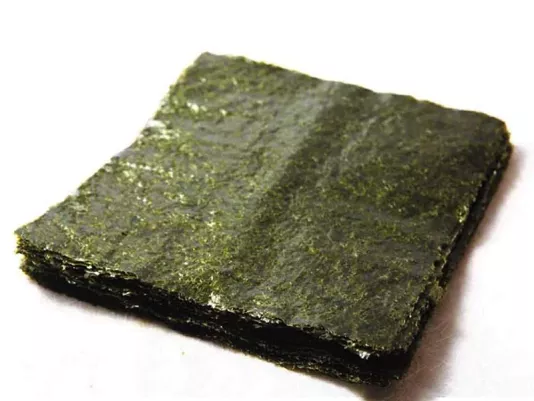Sea Vegetables
Sea vegetables became an integral part of my diet when I began exploring world cuisines. They have a unique flavor profile that is hard to find among ordinary vegetables. Thanks to their high content of iodine, calcium, iron, and other trace elements, seaweeds are considered extremely beneficial. I love adding nori to rolls and snacks, using wakame for light salads, and adding kombu to broths to give them a deeper umami flavor. These vegetables helped me discover new culinary horizons, as they combine perfectly with many ingredients and can transform even a simple dish into something richer and more interesting. They are versatile: they can be dried, boiled, pickled, or fried, and each method reveals new facets of flavor. Sea vegetables became a source of inspiration for me, and I always recommend them to those who want to diversify their menu and make it healthier.
Different Types of Sea Vegetables
Nori as a Universal Ingredient
Nori was a real discovery for me when I started cooking dishes with elements of Eastern cuisine. These thin sheets of seaweed I most often use for making rolls, but over time I learned to use them in other dishes as well. Nori is perfect for making appetizers: I dry the sheets in the oven, cut them into strips, and get crispy snacks that even children enjoy. Sometimes I add crushed nori to soups or salads – they give dishes a special sea aroma and a light salty note. This ingredient is rich in protein, iodine, and other nutrients, so I’m sure it makes meals more balanced. I love using nori together with vegetables and rice because they highlight the taste of other products and create a sense of harmony in every bite. For me, nori is an example of how one simple ingredient can change the approach to cooking and open new possibilities for everyday meals.
Wakame in Light Dishes
I fell in love with wakame for its delicate flavor and ability to bring lightness to dishes. I most often use this sea vegetable in salads because it quickly rehydrates after soaking and becomes juicy and tender. Combined with cucumber, sesame, and a light dressing, wakame creates a dish that always associates for me with freshness and health. I also add it to miso soup, and thanks to this, the broth gets a distinctive sea aroma and a special depth of flavor. Wakame is rich in vitamins and minerals that keep the body energized, so I often include it in my diet when I want to make my meals more balanced. In my experience, wakame became an ingredient that helps create simple yet refined dishes that both adults and children enjoy. I’m sure this sea vegetable deserves a place in every kitchen of those who value health and original flavors.
Kombu as a Base for Broths
I use kombu mostly for making broths, as this sea vegetable gives dishes a distinctive umami taste. The most well-known example is dashi, a traditional broth I learned to prepare at home. I usually soak kombu in cold water and then slowly bring it to a boil to extract the maximum flavor and nutrients. I noticed that this ingredient adds not only depth but also a pleasant aftertaste to broths, which pairs wonderfully with vegetables, fish, or seafood. Sometimes I use ground kombu as a seasoning – it enhances the flavor of sauces or even rice dishes. This sea vegetable is very rich in iodine and minerals, so I confidently consider it not only tasty but also a healthy addition to the menu. For me, kombu is an example of how one simple ingredient can completely transform a dish, making it richer and more harmonious.
Arame and Its Culinary Possibilities
I discovered arame not so long ago, but this sea vegetable quickly became a favorite thanks to its mild flavor and versatility. It has a dark color and thin strips that, after soaking, become tender and pleasant to the taste. I often use arame in salads with carrots or cucumbers, adding a light soy dressing – the result is a dish that is simple and very healthy at the same time. Sometimes I stew arame with vegetables, and it makes an excellent side dish that pairs well with fish or meat. I like that arame keeps its texture even after heat treatment, and its flavor is not too strong, which makes it suitable for everyday meals. I noticed that this ingredient is especially appealing to those who are just starting to get acquainted with sea vegetables, as it is mild and not overpowering. For me, arame is a way to enrich my cooking with new flavor shades, making my diet even more varied and interesting.
Diversity and Benefits of Sea Vegetables
Sea vegetables became a true discovery for me, as they can provide a completely new taste experience and significantly enrich the diet. I often combine different types of seaweed – nori, wakame, kombu, or arame – and each of them adds its own character to the dishes. I use nori for rolls and crispy snacks, wakame gives lightness to salads, kombu adds depth to broths, and arame opens the way to new side dishes and stews. I realized that sea vegetables not only diversify the menu but also strengthen health thanks to the microelements that are lacking in regular foods. In everyday life, they help me create light and healthy dishes, while during festive occasions they can impress guests with their unusual taste and sea aroma. That’s why I always recommend including sea vegetables in the diet for those who want to diversify their meals and make them more harmonious.



